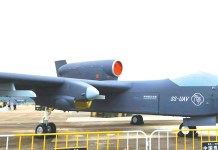In what could set alarm bells ringing, a Chinese survey ship has been spotted operating in the Indian Ocean, according to Naval News. To make matters worse, the vessel, ‘Xiang Yang Hong’, did not broadcast its position in the international waters using its transponder, mandatory for all civilian ships.
Transponders provide a means for ships to electronically exchange data, including identification, position, course, and speed with other nearby ships and the vessel traffic services stations.
This is not the first time that a ship has visited the area. Many such vessels have been spotted in recent years. According to H.I. Sutton, a defense analyst, the bigger picture is that it is part of a major effort by China to systematically map the seabed across the vast swath of the Indian Ocean.
Hydrographic data can be used for both civilian and military uses. Mapping the sea bed could help civilian ships know which areas to avoid during navigation. Similarly, the military would know which areas a submarine could pass by undetected.
In wake of the recent events in the Eastern Indian Ocean and the West Pacific, the region could be of interest for Beijing, which now has the largest surface navy (in numbers) and is rapidly expanding submarine capabilities.
Meanwhile, open-source intelligence (OSINT) analysts have been tracking the Chinese activity in the region for some time, and they found a ‘clearer pattern’ emerging, especially in the Indian Ocean.
#Breaking #OSINT Data found by research with @AuroraIntel & experts in their network shows the #China vessel SHI YAN 1 as reported by media in #India 460Kms east of #portblair on 31/08/2019 as a part of its mission in the #bayofbengal before being expelled by the #Indiannavy https://t.co/RI5Mlh94sG pic.twitter.com/xRlst6hxsR
— d-atis☠️ (@detresfa_) December 3, 2019
For example, in December 2019, a Chinese vessel suspected to be involved in spying activities was identified and expelled by the Indian Navy near the Port Blair region in Andaman and Nicobar Islands.
Can China’s Robotic Submarines Match the US Naval Might in the South China Sea?
Similarly, four Xiang Yang Hong survey ships operated by China’s State Oceanic Administration have been particularly active in the area for the past two years, and according to the sources, these ships are relatively new – being built in the last decade only.
The emerging reports have shown that two ships, the Xiang Yang Hong-01 and -16, have been conducting an extensive survey around an underwater mountain ridge cutting across the Indian Ocean, called ‘Ninety East’ ridge. According to Sutton, the ships’ disciplined racetrack patterns are indicative of the seabed mapping.
“For this, they would tow a high-resolution side-scan sonar. Between them, these ships have made multiple trips with each starting where the other finished,” Sutton says.
The reason for focusing on the Ninety East Ridge is unconfirmed, but it may particularly significant for submarine operations. “It creates an almost uninterrupted chain of shallow water across the ocean where submarines may be liable to detection,” he adds.
The survey activities near Malacca Strait are of much interest to the PLA Navy, as it is one of the only two major routes to the Indian Ocean, the other being Sunda Strait. All shipping from the Indian Ocean to the West pacific goes through here, including military vessels and, of course, submarines.
Sutton adds that some of the survey activities, closer to Indonesia and the Andaman and Nicobar islands, may relate to finding the US Navy’s reputed ‘fish hook’ sensor networks. These are designed to track Chinese submarines entering the Indian Ocean.
Recently, long-endurance Chinese UUVs (unmanned underwater vehicles) have been found trailing in the Indian Ocean. These UUVs gather data on currents and water properties, and just like seabed mapping, which can be used by civilian ships and, is particularly relevant for submarine warfare.
Follow EurAsian Times on Google News




